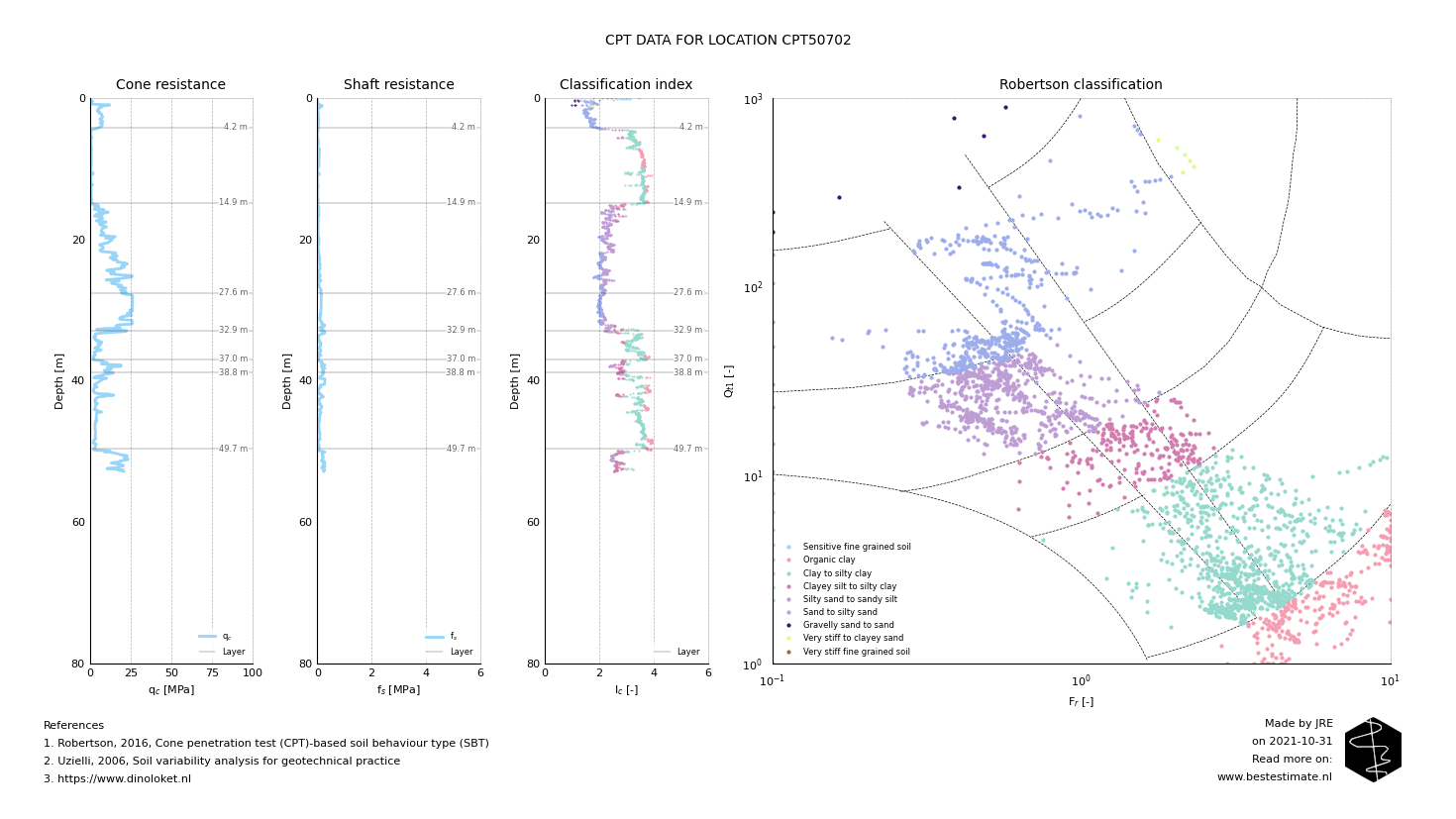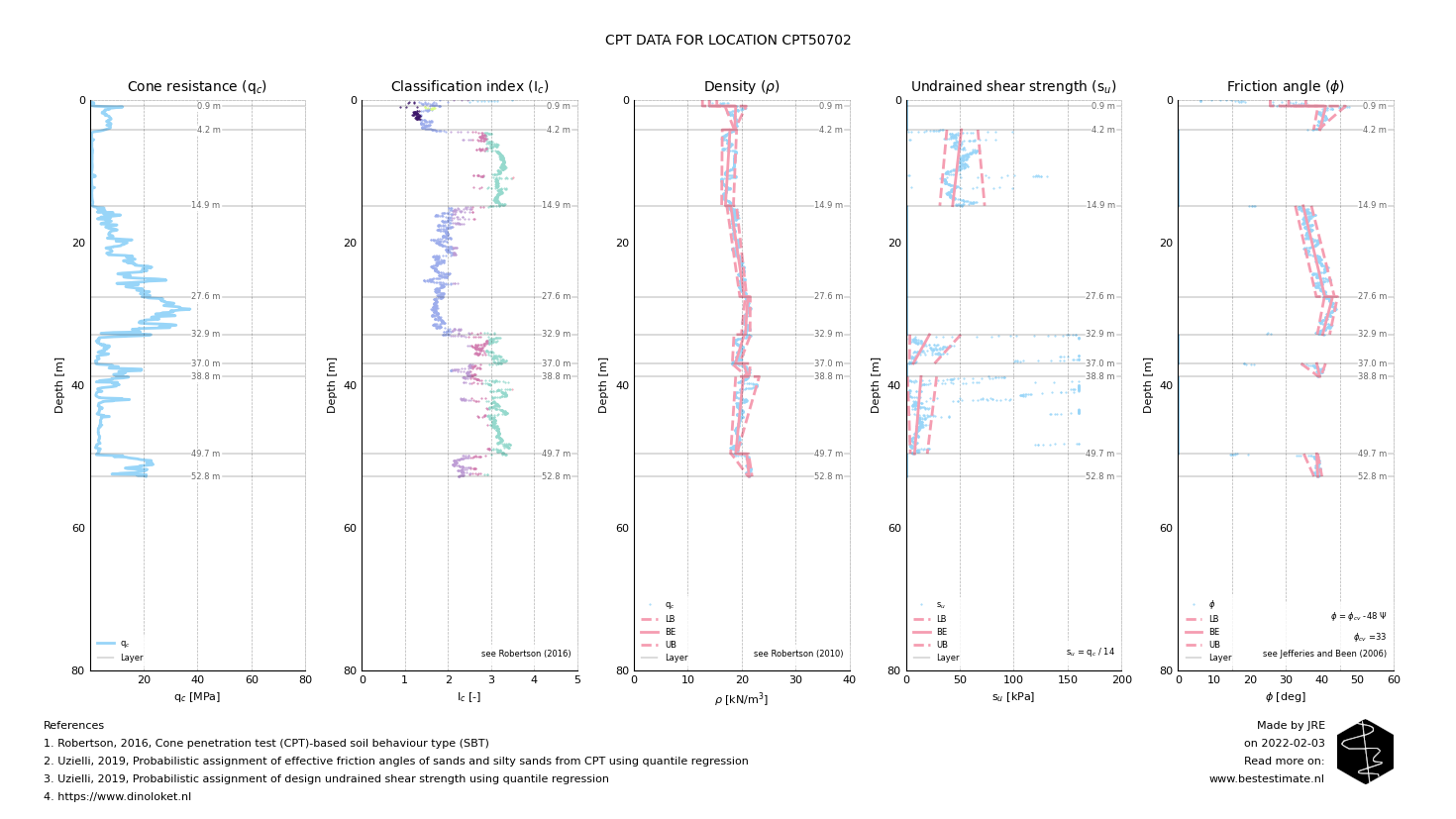SOIL PROFILING & QUANTILE REGRESSION
- Fully automatic processing of Cone Penetration Tests (CPTs)
- Layer identification of each individual profile for further design works
- Automatic coupling of identified profiles with strength parameter estimates
- Objectively conservative soil properties based on quantile regression
Disclaimer. Privacy. Unsubscribe. Reach out.
AUTOMATED LAYER IDENTIFICATION
Cone Penetration Tests (CPTs) are often used for the design of pile foundations. Manual assessment of CPT data is not uncommon in practice. This is not desirable for large amount of tests or detailed statistical analyses. Figure 1 presents a construction site where this is very relevant. The Best Estimate has an API endpoint for identification of soil profile layers.Note that manual adjustments to the performed layer identification are always possible. Automation in no way means elimination of engineering judgment. Alterations to the identified layers can easily be made be specifying the layers in the input file yourself.

Figure 1, Location with multiple Cone Penetration Tests (CPTs) performed [1]
The algorithm works in four steps. First the CPT profiles are converted to a standardized format [1]. Secondly Robertson classification is performed and the classification index (Ic) [2]. Afterwards a median bandwidth filter is applied to remove the outliers from the obtained data. Finally the layer boundaries are determined with a moving window method. Figure 2 shows the outcomes of the analysis for location CPT50702. Around thin layers and lenses the algorithm can suffer identifying layer boundaries. This is deliberately not eliminated since thin layers and lenses can have significant impact on the operation. This is a good example of where engineering judgment is essential.
Figure 2, Automatically identified layers for location CPT50702 based on methodology described
QUANTILE REGRESSION
Strength parameters need to be determined from the CPT data in order to design a pile foundation. With the Best Estimate API this can be done using quantile regression according to a fixed confidence interval. The higher the confidence interval, the wider the bandwidth, the safer the design. A trendline is fitted for each layer based on the probability of exceedance of observed values in the soil unit. This eliminates the subjective interpration which is used in conventional pile design. Furthermore it allows for defining upper and lower bound profiles objectively according to a pre-defined safety level [2]. Methods using quantile regression were developed for both drained and undrained soils in the past [3, 4] and are implemented in the API. Figure 3 shows the found parameter profiles for the density, undrained shear strength and angle of internal friction for location 'CPT050702'.
Figure 3, Soil profile assessment using quantile regression to construct lower and upper bounds (LB, UB)
Table 1 shows the difference in required pile lengths [1] obtained from a conventional and a probabilistic approach using quantile regression. The conventional approach uses mean profiles with the safety factors prescribed in Eurocode 7 [2]. A confidence interval of 95% was used for estimating the lower bounds with quantile regression. The analysis clearly results in some interesting conclusions. For CPT050699 and CPT050714 it seems the conventional approach alligns with the probabilistic one (although one is a bit unconservative). However, for CPT050714 the required pile length using quantile regression is almost 4 m longer. This indicates that the design codes can be insufficient for safe pile design at this location. This case is an example of how reliability-based design can result in both safer as well as more cost efficient designs.
| Location | Mean estimate (EC7) | Quantile regression |
|---|---|---|
| CPT050699 | 9.2 m | 10.3 m |
| CPT050702 | 9.8 m | 9.7 m |
| CPT050714 | 14.5 m | 18.9 m |
Table 1, Comparison of required pile length obtained with conventional methods and quantile regression
References
- https://www.dinoloket.nl
- Eurocode 7: Geotechnical design — Part 1: General Rules
- Robertson, 2016, Cone penetration test (CPT)-based soil behaviour type (SBT)
- Uzielli, 2019, Probabilistic assignment of friction angles of sands from CPT using quantile regression
- Uzielli, 2019, Probabilistic assignment of design undrained shear strength using quantile regression
